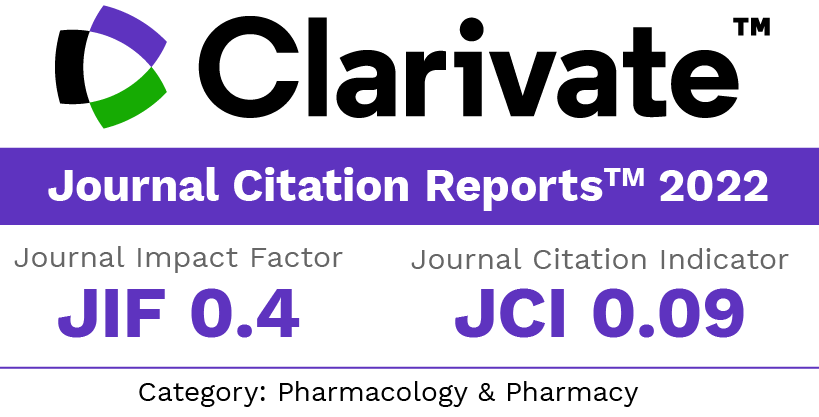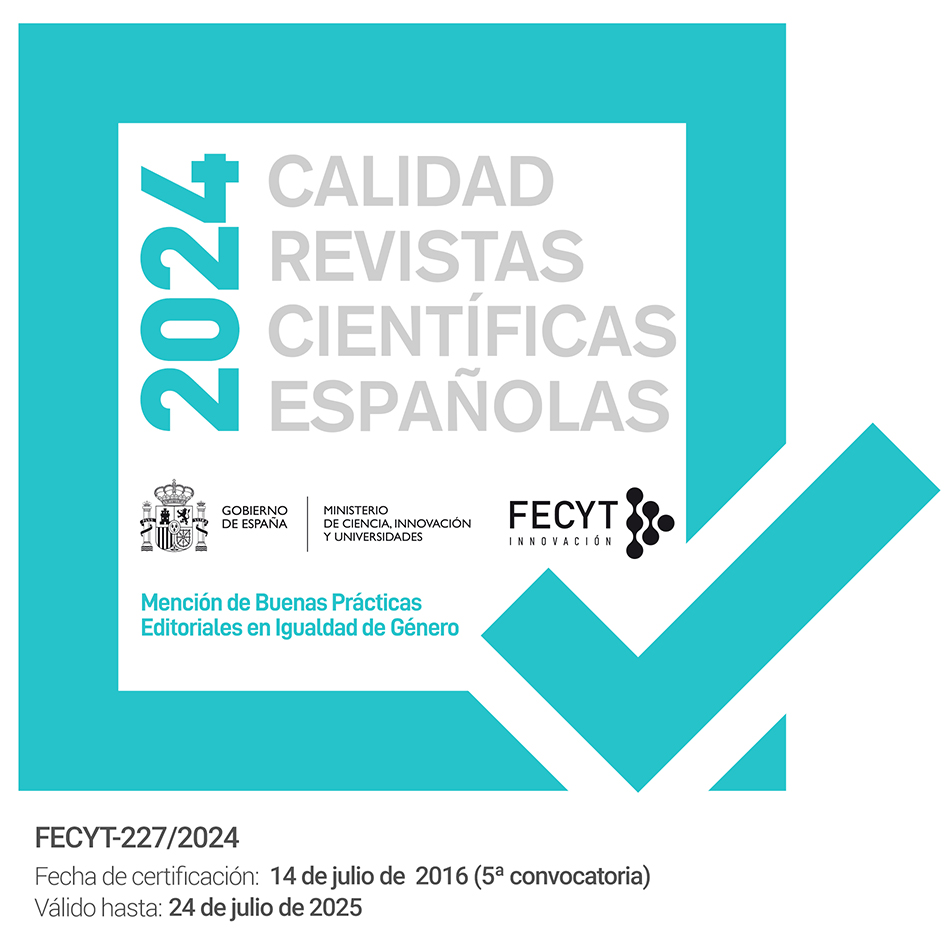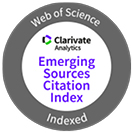Formulation and Evaluation of Theophylline Controlled Release Matrix Tablets using Guar gum
Keywords:
Controlled release, Guar gum, Matrix tablets, TheophyllineAbstract
Theophylline controlled release matrix tablets were prepared with guar gum in two ratios and with three different hardness of 5, 6 and 7kg/cm2. Theophylline controlled release granules were prepared and evaluated for the angle of repose, bulk density, tapped density, compressibility index and hausners ratio. All the formulation showed good flow properties. The compressed tablets were evaluated for the hardness, uniformity of weight, friability, drug content and invitro dissolution studies. All the formulations showed compliance with pharmacopial standards. There was no interaction between drug, polymer and other excipients. It was confirmed by FTIR studies. Among all the formulations F6 (i.e. polymer ratio1:2 and hardness 7kg/cm2) showed prolong release when compare to other formulations. The drug release kinetics showed zero order. The optimum formulation (F6) was stable when it was stored at 40 + 20 C, 280 + 20 C and at 450 + 20 C for 6 months.Downloads
References
Pandit JK, Singh S and Muthu MS. Controlled release formulation in neurology practice. Annual of Ind Acadamy of Neurolgy Dec – 2006; 207 – 216.
Yeole PG, Galgatte, Babla IB and Nkhat D. Design and evaluation of xanthan gum – based sustained release matrix tablets of diclofenac sodium. Ind J Pharm Sci 2006; 68: 185-189.
Manthena VS Varma, Aditya M. Kaushal, Alka Garg and Sanjay Garg. Factors affecting mechanism and kinetics of drug release from matrix-based oral controlled drug delivery systems. Am J Drug Deliv 2004; 2:43-57.
Evelyn Ojoe, Edna Mitie Miyauchi, Telma Mary Kaneko, Maria Valéria Rolbes Velasco and Vladi Olga Consiglieri. Influence of cellulose polymers type on in vitro controlled release tablets containing theophylline. Brazilian J Pharm Sci 2007; 43: 571-579.
Prafulla Kumar Nandi. Invitro evaluation of theophylline – SR tablets. The Eastern Pharmacist oct-1997; 149-150.
Carr RL. Evaluating flow properties of solids. Chem Eng 1965; 72: 163 – 168.
Cooper J and Gunn C. Powder flow and compaction. In: Carter S.J, Tutorial Pharmacy, CBS publishers, New Delhi, 1986; 211 – 233.
Shah D, Shah Y and Rampradhan M. Development and evaluation of controlled release diltiazem hydrochloride microparticles using cross – linked polyvinyl alcohol. Drug Dev Ind Pharm 1977; 23: 567 – 574.
United States of Pharmacopeia-National Formulary. USP 30 – NF 25. The Unit States Pharmacopeial Convention, Rockville, MD, 2007, Vol. 1, 226.
Rippe E. Compression of solid and compressed dosage forms. In: Encyclopedia of pharmaceutical technology, Swarhrick, J.Marcel Dekker. Inc., New York, 1990; 149-166.
Pharmacopoeia of India. Ministry of health and family welfare. Govt. of India, Controller of publications, New Delhi, 1996; vol.II., 736; A-80-83, 147 and 169.
Leon Lachman, Herhert A, Liberman and Joseph L Karnig. The theory and practice of industrial pharmacy. 3rd ed. Lea and Febigen, Philadelphia, 1986; 430-456.
Pharmacopoeia of India. Ministry of health and family welfare. Govt. of India, Controller of publications, New Delhi, 2007; vol.II, 1795.
Pathra CH.N, Bhanoji Rao MK, Yadav KS and Prakash K. Influence of some cellulose ethers on the release of propranolol hydrochloride from guar gum matrix tablets. Ind J Pharm Sci 2004; 66: 636 – 641.
Hamid A. Merchant, Harris M. Shoaib, Jaweria Tazeen and Rabia I. Yousuf. Once-daily tablet formulation and in vitro release evaluation of cefpodoxime using hydroxy propyl methylcellulose: A technical note. AAPS PharmSciTech 2006; 7: E1 – E6.
Punna Rao Ravi, Sindhura Ganga and Ranendra Narayan Saha. Design and study of lamivudine oral controlled release tablets. AAPS PharmSciTech 2007; 8: 101; E1 – E9.
Pandey VP, Manavalan R, Sundar Rajan T and Ganesh KS. Formulation and release characteristics of sustained release diltiazem hydrochloride tablet. Ind J Pharm Sci 2003; 65: 44 – 48.
Sundaramoorthy K, Kavimani S, Vetrichelvam T, Manna PK and Venkappayya D. Formulation and evaluation of extended release dosage form of metformin hydrochloride using combined hydrophobic and hydrophilic matrix tablets. Ind J Pharm Edu Res 2008; 42: 232-242.
Schwarz BJ, Simonelli AP and Higuchi WI. Drug release from wax matrix analysis of data of order of kinetic release and diffusion controlled model. J Pharm Sci 1998; 57: 274-277.
Korsmeyer RW, Gurny R, Doelker E, Buri P and Peppas NA. Mechanisms of solute release from porus hydrophilic polymers. Int J Pharm 1983; 15: 25-35.
Kim H and Fassihi R. Application of binary polymer system in drug release rate modulation II. Influence of formulation variables and hydrodynamic conditions on release kinetics. J Pharm Sci 1997; 86: 323-328.
Downloads
Published
How to Cite
Issue
Section
License
The articles, which are published in this journal, are subject to the following terms in relation to the rights of patrimonial or exploitation:
- The authors will keep their copyright and guarantee to the journal the right of first publication of their work, which will be distributed with a Creative Commons BY-NC-SA 4.0 license that allows third parties to reuse the work whenever its author, quote the original source and do not make commercial use of it.
b. The authors may adopt other non-exclusive licensing agreements for the distribution of the published version of the work (e.g., deposit it in an institutional telematic file or publish it in a monographic volume) provided that the original source of its publication is indicated.
c. Authors are allowed and advised to disseminate their work through the Internet (e.g. in institutional repositories or on their website) before and during the submission process, which can produce interesting exchanges and increase citations of the published work. (See The effect of open access).


















